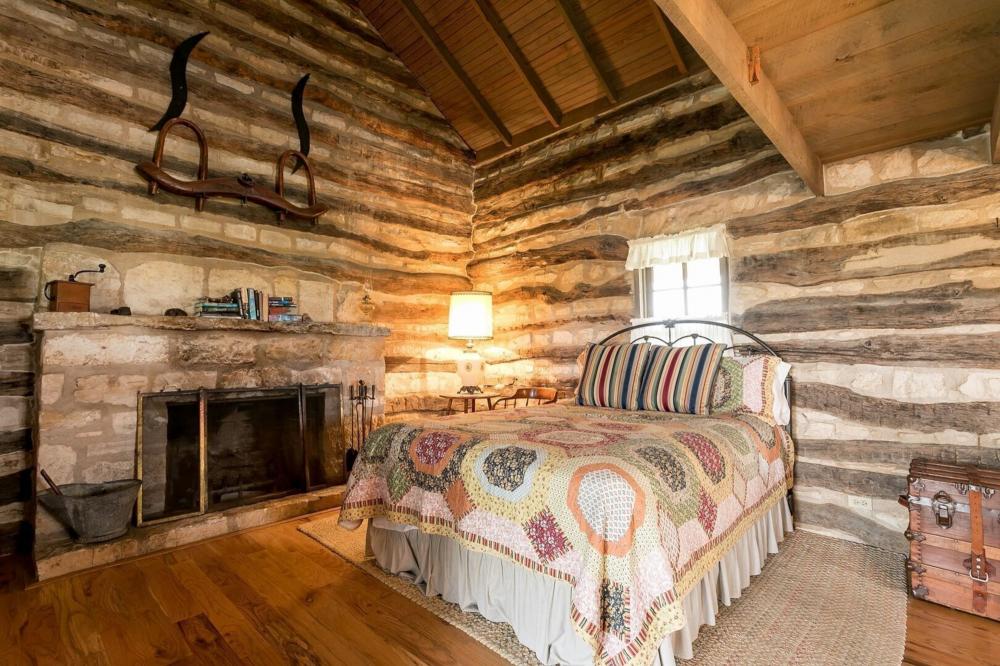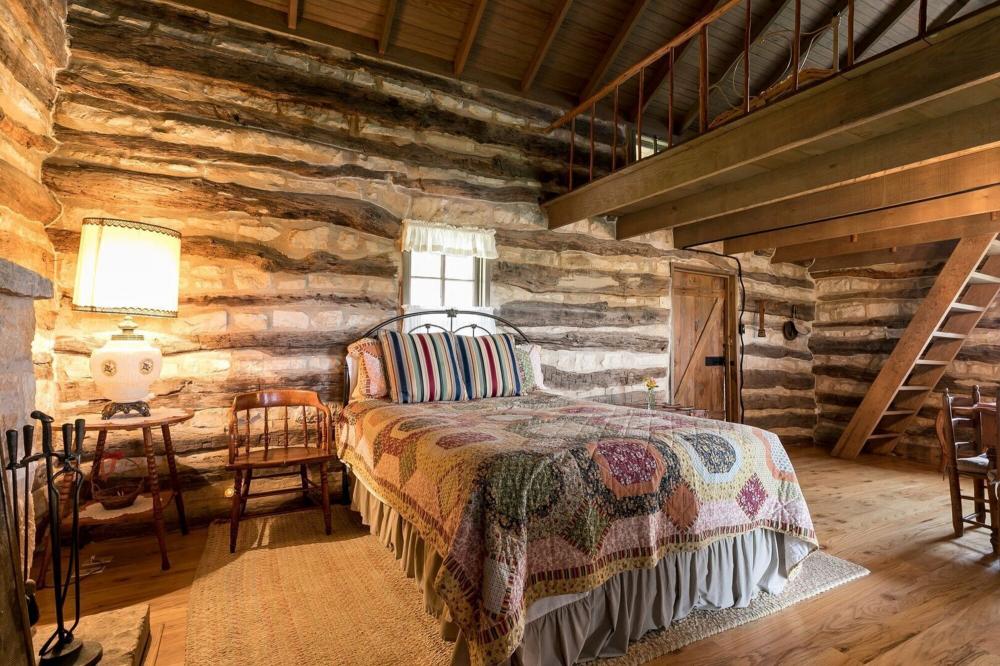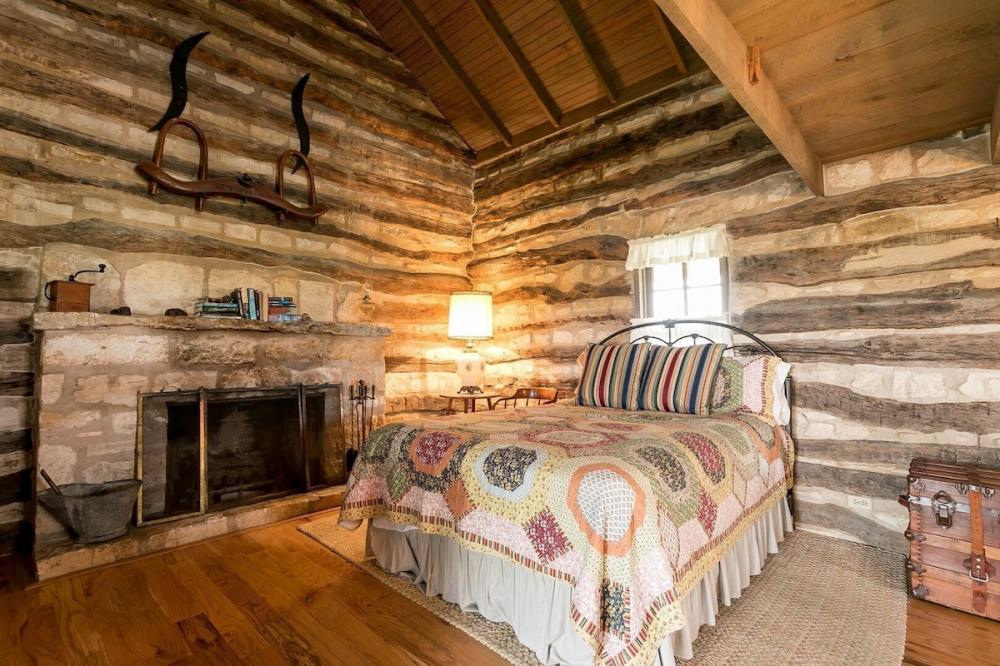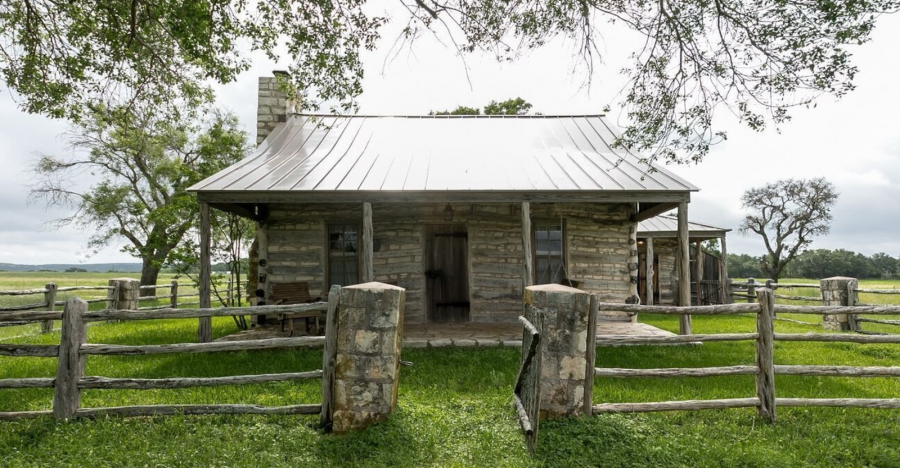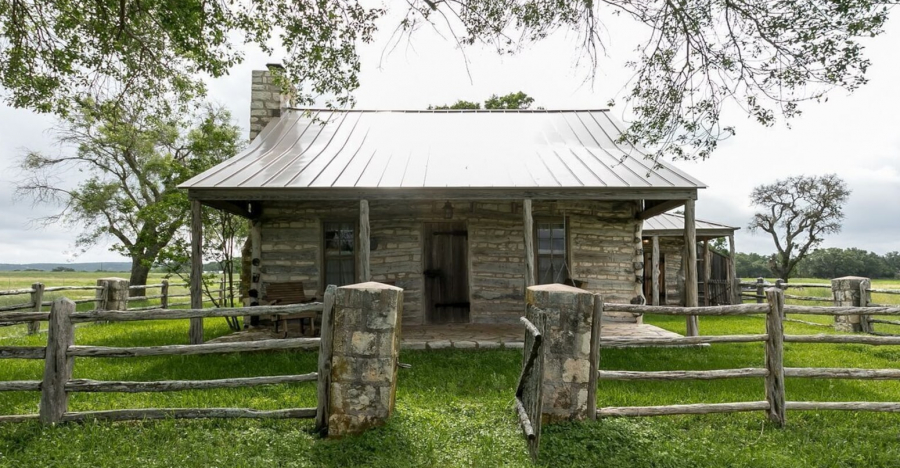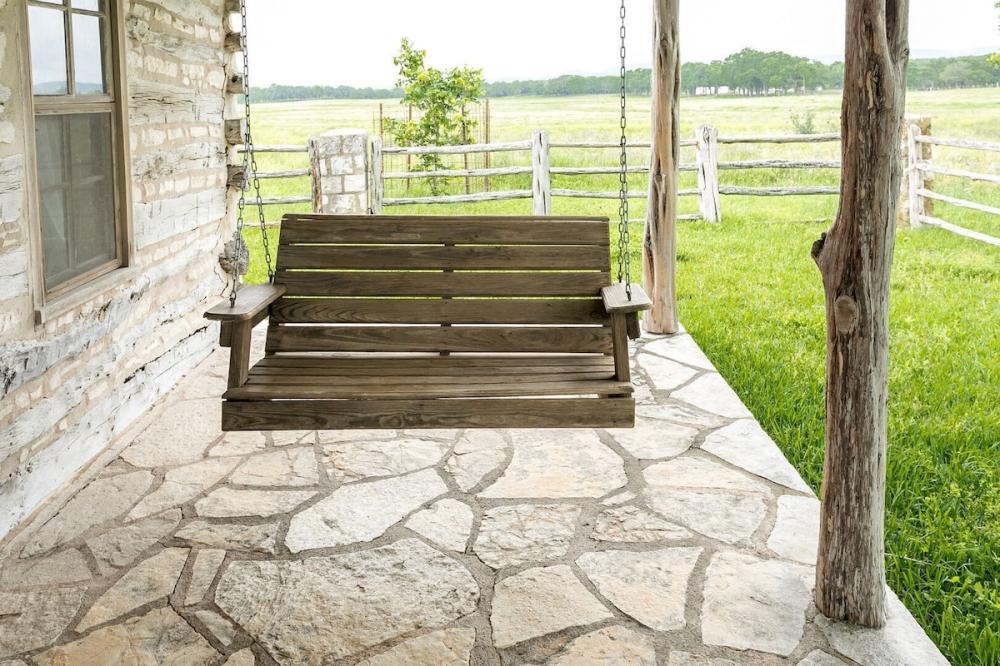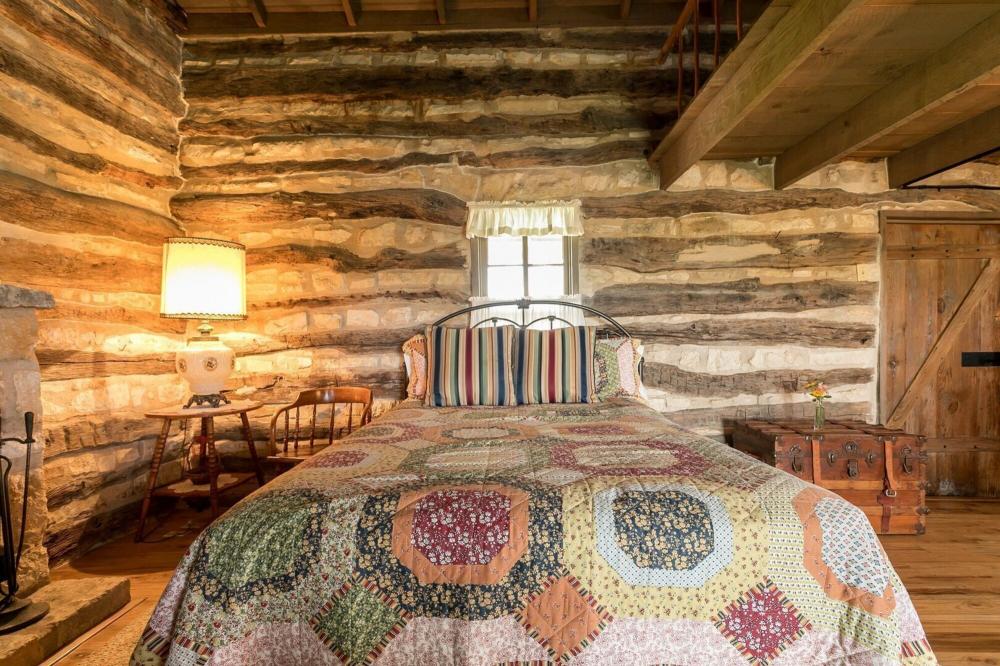You’ll fall in love with this charming country log cabin located in Fredericksburg, Texas with a kitchen and balcony. The rustic log cabin is the place to be for a truly quiet, peaceful, away-from-it-all vacation stay. This reconstructed log cabin is set in the middle of acres of beautifully kept fields. It has some trees around it, and the nearest home is that of the hosts. A porch at the front has a swing to enjoy as you look over the fishing pond. A back porch covers the short walk (about 10 feet) to the small log cabin which is the bathroom. There is a wonderful antique-footed tub (no shower) to provide a luxurious soak.
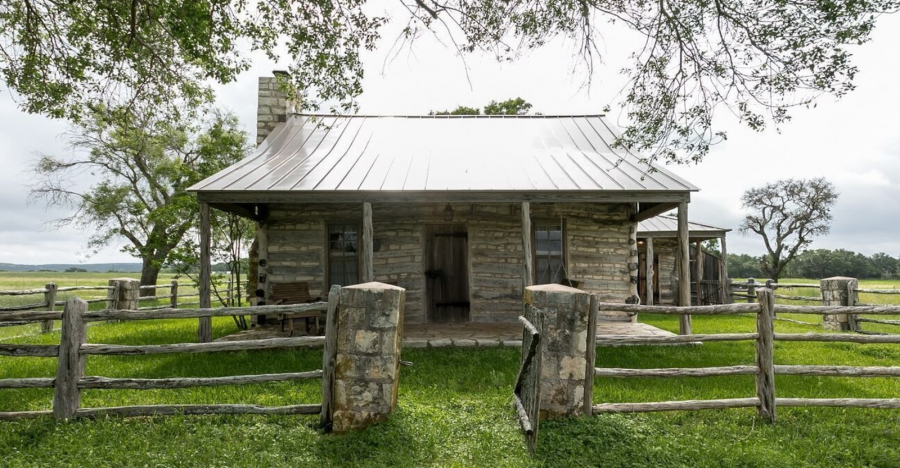
The restoration of this log cabin is outstanding with the logs exposed on the interior and exterior walls. The main cabin is a large room with a living area and mini kitchen uniquely designed to complement the antique furnishings. The fireplace is the focal point of the room and can be seen from the loft. Truly a romantic setting. A ladder-type stairway leads to the sleeping loft that holds a double bed and single bed with quilt coverlets and a large old trunk.
A log home restoration can be a lot of work, with everything from water damage to carpenter bees, there are ways to take care of and even prevent them all. After a thorough media-blasting, sanding, and cleaning, older log walls are ready to accept a fresh coat of stain. For older log homes the chinking material needs to be replaced with modern, flexible chinking for air tightness. If your log home is new, you can also prevent major issues from occurring in the first place. The initial step any log home homeowner should take is to make a visual inspection of their log home twice a year in the spring and the fall. In both seasons, but especially in the spring, you want to get on a ladder and check your gutters to make sure they aren’t clogged. If they are, water will run over and splash down on the logs. Check external spigots for leaks or drips, because again, this will create constant, undue moisture conditions on the walls. These are the normal housekeeping kind of things.
While you’ve got the ladder out, you can also inspect your dormers, if you have them. Then check the logs themselves. Look at the visible seals, such as the caulking and/or the chinking. Look for cracks or separations in the building materials. Keep an eye out for dark spots. If you have an upward-facing check that collected water, the wood will darken, indicating the early stages of mold or decay. Log homeowners must look for these signs in the spring and either repair any issues themselves or call a log home maintenance pro to take a look. If left unattended through summer or fall, it’s already too late in the season for most people to get a problem fixed, unless they live in a southern climate, not to mention the additional damage that exposure could cause.
